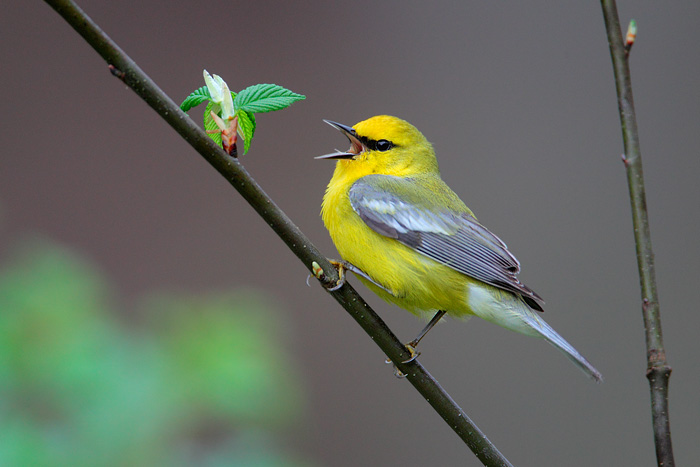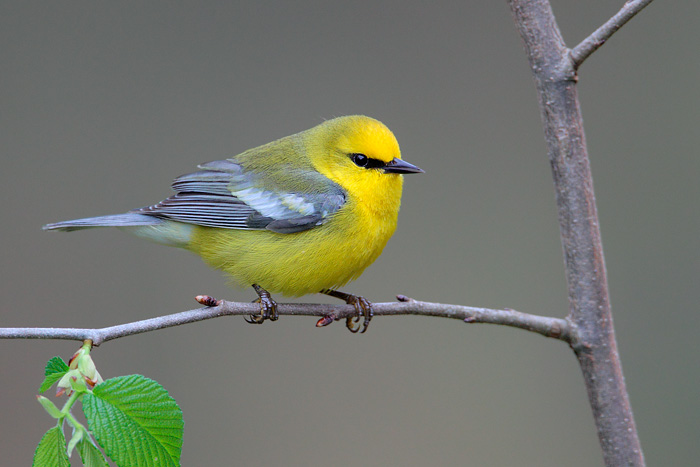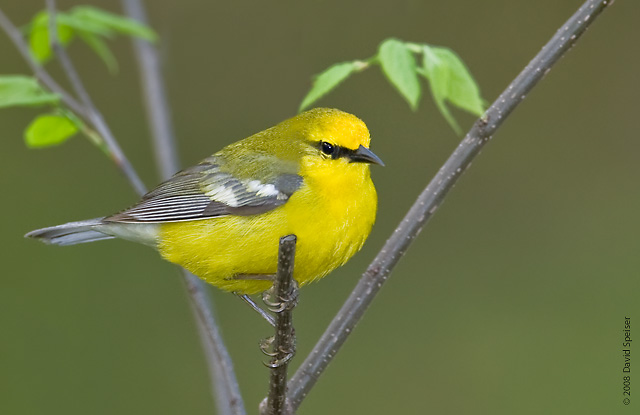
Vermivora pinus
SUBFAMILY
Parulinae
TAXONOMY
Vermivora pinus Linnaeus, 1766, Pennsylvania.
OTHER COMMON NAMES
English: Blue-winged yellow warbler; French: Paruline а ailes
bleues; German: Blauflьgel-Waldsдnger; Spanish: Reinita Aliazul.
PHYSICAL CHARACTERISTICS
4.5–5 in (11.4–12.7 cm). Golden head with a black eye stripe,
golden underside, darker back, blue-gray tail and wings, and
two white wing bars. Males and females have similar appearance.
DISTRIBUTION
Breeds in northern United States, winters from Mexico to
Panama in Central America.
HABITAT
Forest edges and swamps.
BEHAVIOR
Moves rather deliberately through trees, sometimes hanging
upside-down from branches. Often pauses for lengths of time
on favorite perches.
FEEDING ECOLOGY AND DIET
Mainly insects.
REPRODUCTIVE BIOLOGY
Breeds in low bushes, building cup-shaped nests on or close to
the ground. Average clutch is four to seven finely speckled
eggs that hatch in less than two weeks. Sometimes occurs side
by side with golden-winged warblers, and the two produce viable
hybrid offspring, known by the common names of Brewster’s
and Lawrence’s warblers.
CONSERVATION STATUS
Not threatened. Appears to be replacing golden-winged warblers
in areas where they overlap.
SIGNIFICANCE TO HUMANS
None known.
Photo Gallery of - Blue-winged warbler




 Animalia Life
Animalia Life